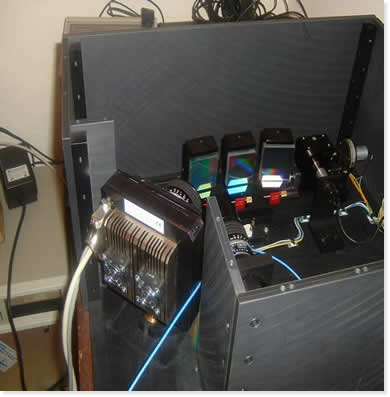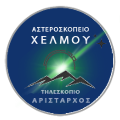Aristarchos Transient Spectrometer (ATS)
A low/medium dispersion spectrometer has been designed and manufactured specifically to obtain spectra of relatively bright (<16 mag) but transient phenomena. It can be left running permanently for opportunist over-ride observations of transient events. Survey programs of relatively bright but transient phenomena can also be carried out. (i.e. Gamma-ray bursts as soon after the events as possible, the variable spectra of Symbiotic stars, Cataclysmic variables, Nuclei of nearby Seyfert galaxies, nearby nova events etc.) The spectrometer can obtain sufficient quality spectra (signal-to-noise 10σ) down to 16th mag for point sources. ATS was constructed by the University of Manchester and is sponsored by the Universities of Manchester and Patras.

The detector is a thermo-cooled Apogee U47-MB, E2V-CCD4710 AIMO back illuminated, Grade 1 CCD with 1024×1024 13 sq. micron pixels.
The Quantum Efficiency (QE) of the ccd camera is available here.
The spectrometer’s long slit input is fed by 50 fibres (each 50 micron diameter) in a 10 arcsec diameter, bundle in the telescope’s focal plane.
Optical layout of ATS designed by Prof. J. Meaburn

